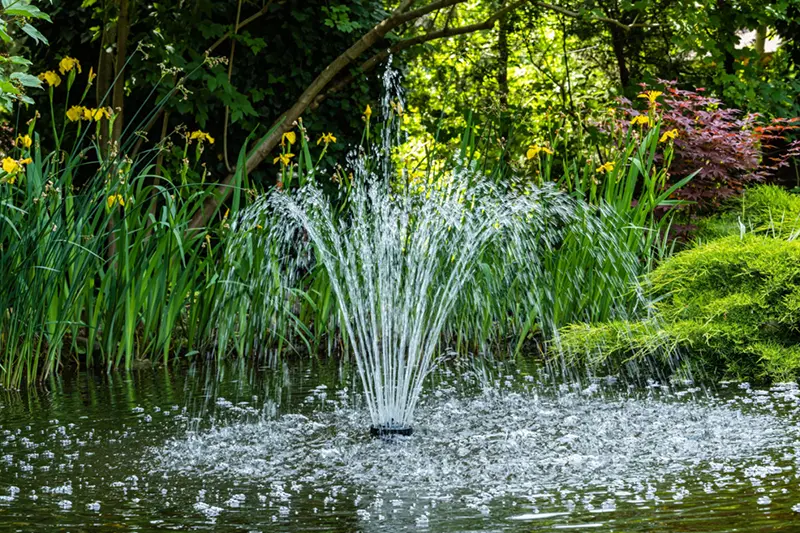Have you noticed that your pond or lake’s shoreline has begun to recede? Whether natural or man-made, lakes and ponds are susceptible to erosion, and property owners must take preventative measures to protect their properties from this issue. Erosion gradually wears down the shoreline, creating an array of environmental issues and potentially compromising the aesthetic appeal of your landscape. The good news is that there are many ways to control erosion and restore the health of your water bodies.
What Causes Shoreline Erosion?
Shoreline erosion is a natural process accelerated by human activities, weather conditions, and fluctuating water levels. For example, when rainwater falls directly onto exposed soil, it dislodges particles, which can then be carried off by the wind. Similarly, the continuous lapping of ripples against the shoreline can cause soil particles to loosen and wash away. Over time, this relentless process can lead to significant loss.
The Importance of Controlling Erosion
Controlling erosion is not just about maintaining the beauty of your lakes and ponds — it’s also about preserving ecological balance, protecting property values, and mitigating risks associated with flooding and pollution. When you implement measures to prevent the loss of soil along the shoreline, you can avoid a number of other complications:
- Loss of Property: When left unchecked, erosion can cause the loss of valuable land around the lake or pond, which can significantly impact property values. For property owners, this could mean a loss in investment, as attractive water bodies often enhance the appeal and market value of a property.
- Murky Waters: Erosion can cause sedimentation, where eroded soil particles end up in the water body. As sediment accumulates in the water, it can disrupt the habitats of fish and other aquatic creatures, potentially leading to a decline in biodiversity. Excessive sedimentation can also alter the depth of the water body, influencing its temperature and oxygen levels and thereby affecting the overall health of the aquatic ecosystem.
- Poor Conditions for Aquatic Life: When soil is eroded, it often carries with it various nutrients and pollutants that have accumulated over time. The nutrient-rich runoff can lead to algal blooms, which deplete oxygen in the water and create dead zones where no aquatic life can survive.
- Flooding: As the shoreline recedes, the capacity of the lake or pond to contain water decreases. During the next heavy rainstorm, the chances of flooding increase.
Effective Strategies for Controlling Erosion
Now that we’ve established why it’s essential to control erosion, let’s look at some effective strategies:
Native Plantings
One of the most cost-effective ways to control erosion is through native plantings. The roots hold the soil together, making it harder for wind and water to carry it away. Additionally, plants can absorb some of the impact of raindrops, reducing their erosion potential.
When selecting plants for your shoreline, consider species that are well-suited to wet conditions and can thrive in your region’s climate. Some examples might include rushes, sedges, and certain grasses.
Physical Barriers
In addition to vegetation, physical barriers can also be used to control erosion. These can range from large rocks placed strategically along the shoreline (rip-rap) to engineered structures like seawalls or bulkheads. While these methods can be quite effective, they tend to be more expensive than plant-based strategies and may require permits.
Keep Animals at Bay
Animals can accelerate erosion by loosening the soil. By implementing measures to deter these animals from frequenting your shoreline, you can reduce the risk of erosion. Some effective measures for keeping pests at bay include using fencing or repellents and discouraging people from feeding the local wildlife.
Regular Monitoring
Keep an eye on your shoreline, especially after heavy rains or storms, and address any signs of erosion promptly. This proactive approach can save you time and money in the long run by preventing minor issues from becoming major problems.
Protect Your Aquatic Assets
Controlling erosion in lakes and ponds involves a multi-faceted approach, combining native plantings, physical barriers, and regular monitoring. Not only does this ensure the longevity of your water bodies, but it also preserves the surrounding land, contributing to a healthier ecosystem overall.
At Aquagenix, we are here to help you preserve the beauty and functionality of your lakes and ponds. With our expertise in erosion repair and pond and lake management, we can help you implement cost-effective solutions tailored to your specific needs. Reach out to our team today to schedule a service and take the first step towards a healthier, more vibrant aquatic landscape.


Recent Comments